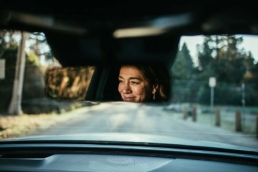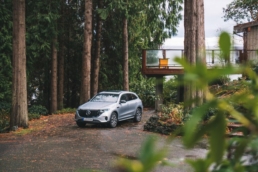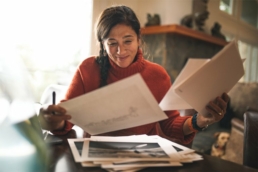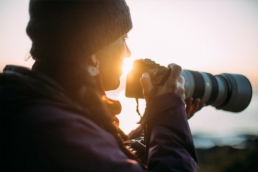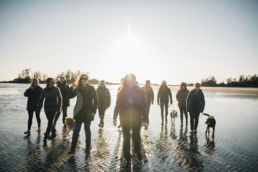How conservation photographer Cristina Mittermeier uses her work to protect the oceans.
The pictures by photographer Cristina Mittermeier show how fragile our planet is. They show the beauty and, at the same time, the transience of nature. Despite all the challenges, Cristina is certain: it is not too late – we can save our planet if we act together now. We visited the marine biologist on board our first all-electric vehicle, the EQC. In her chosen home on Vancouver Island, we talked to her about how she uses her passion for strong stories to make the earth a better place – and how she was the first “conservation photographer” in the world to succeed in a male-dominated profession.
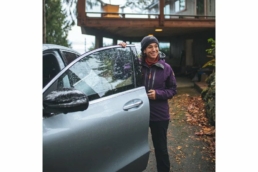
Listening to Cristina Mittermeier talk about nature, there is no need to ask why she has made Vancouver Island the centre of her life. The Pacific island is a natural wonder, impressing with picturesque fjords, rainforests and fascinating storms. One could almost use this natural phenomenon as a metaphor to describe Cristina’s captivating personality: her non-conformity, her courage and her enduring passion for what has helped her to succeed in an industry that is still predominantly male. How does that work? “Don’t listen to the voices in your head telling you that your dream is not for girls. That you are not strong enough, brave enough or smart enough. Instead, imagine walking those voices to the edge of a cliff and throwing them over. It takes a lot of courage to take the more difficult path; do it anyway; defy the norm and be an example to others.” Cristina is using the fact of being a woman to her advantage. She has managed to turn perceived weaknesses into her secret weapon.
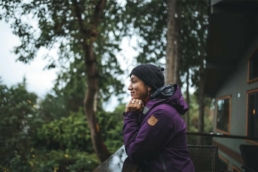
We visit Cristina in her cosy house right on the Bay of Georgia, where she lives with her husband Paul Nicklen and their two dogs. Spread out on the living room table are some pictures, which the photographer is currently signing. Paul Nicklen is also a nature photographer and her “life and adventure partner,” Mittermeier tells. In addition to their shared love of photography, the two are united by their desire to protect the environment. Above all: the oceans. “The sea is full of life, full of wonder, so beautiful and wild. But its beauty is fragile. If we don’t protect it, it will vanish.”
This is one of the reasons why Mittermeier sees her work as political. Her photography is her tool; the social networks are her reach enhancer. Magazines such as National Geographic and TIME print her pictures and on Instagram 1.3 million people follow the work of the 53-year-old. During a peaceful trip in the virtually noiseless and locally emission-free EQC through the pristine nature of Vancouver Island, Cristina tells us more about the philosophy of her daily work, which she describes much more as a calling: “Each of my pictures tells a story – the story of the problems that threaten our planet and our oceans.” This is why she describes herself not as a nature photographer but as an environmental photographer – a “conservation photographer” by all means. She has significantly coined the term. Conservation stands for preserving. This is exactly what Mittermeier wants to do: help preserve the planet – and motivate others to do the same. How did she manage to live her dream? “Unknowingly, I made all my important life decisions based on the Japanese philosophy Ikigai (‘finding the meaning of life’). Ikigai calls for us to pursue the things we love, which are the things we have a talent for, which are the things we can earn a living from – and which are the things that make our world a better place.”
Cristina Mittermeier prefers to take her photos where it is particularly cold and wet: under water. However, only about ten years ago Mittermeier came to underwater photography. “I am the best example of how it is never too late to pursue your dreams,” she laughs. Before that, Cristina photographed rather casually – until a special turning point many years ago. At that time, she accompanied the father of her children, a biological anthropologist, to the tropical regions of the world. While he set off on expeditions, she stayed behind in the surrounding villages. She began to portray the inhabitants in the villages – mostly women and children of indigenous tribes. Not in the service of science, but for emotional reasons. Her aim: to capture the perspective of disenfranchised and mostly invisible women. When the photos were printed, she noticed that they make the viewers think. “As a biologist, I was committed to environmental protection already. But I noticed that people react very differently to my photos than to my studies.”
Since then, she has had a dream – and through her work, she is calling for the protection of our unique planet. “I love that my job is my entire life. I get up every morning knowing that I’m contributing to a better world with what I love most – using my stories and images to help protect nature.”

